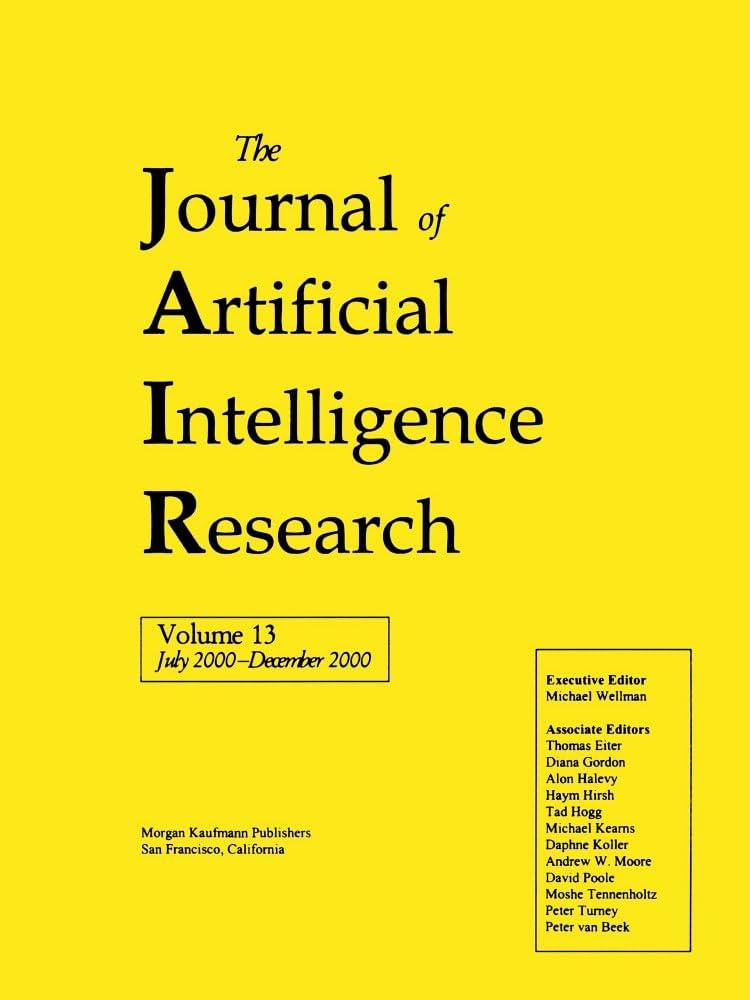pomdp粒子置信近似的最优性保证
IF 4
3区 计算机科学
Q2 COMPUTER SCIENCE, ARTIFICIAL INTELLIGENCE
引用次数: 2
摘要
部分可观察马尔可夫决策过程(pomdp)为现实世界的决策和控制问题提供了一种灵活的表示。然而,众所周知,pomdp很难解决,特别是当状态和观察空间是连续的或混合的时候,这通常是物理系统的情况。虽然最近使用观测似然加权进行规划的基于在线采样的POMDP算法已经显示出实际有效性,但这些算法所使用的粒子滤波技术的近似误差的一般理论尚未被提出。我们的主要贡献是限定任何POMDP与其相应的有限样本粒子信度MDP (PB-MDP)近似之间的误差。这种pb -MDP和POMDP之间的基本桥梁允许我们通过求解相应的粒子信念MDP来将任何基于采样的MDP算法适应于POMDP,从而将MDP算法的收敛性保证扩展到POMDP。在实践中,采用粒子滤波信念转换模型作为MDP求解器的生成模型来实现。虽然这需要访问来自POMDP的观测密度模型,但它只会将MDP求解器的过渡采样复杂性增加O(C),其中C是粒子数。因此,当与稀疏采样MDP算法相结合时,该方法可以产生对状态和观测空间的大小没有直接理论依赖的pomdp算法。除了我们的理论贡献之外,我们还在基准POMDP上进行了五个数值实验,以证明采用PB-MDP近似的简单MDP算法,即Sparse-PFT,可以实现与其他领先的连续观测POMDP解算器相媲美的性能。本文章由计算机程序翻译,如有差异,请以英文原文为准。
Optimality Guarantees for Particle Belief Approximation of POMDPs
Partially observable Markov decision processes (POMDPs) provide a flexible representation for real-world decision and control problems. However, POMDPs are notoriously difficult to solve, especially when the state and observation spaces are continuous or hybrid, which is often the case for physical systems. While recent online sampling-based POMDP algorithms that plan with observation likelihood weighting have shown practical effectiveness, a general theory characterizing the approximation error of the particle filtering techniques that these algorithms use has not previously been proposed. Our main contribution is bounding the error between any POMDP and its corresponding finite sample particle belief MDP (PB-MDP) approximation. This fundamental bridge between PB-MDPs and POMDPs allows us to adapt any sampling-based MDP algorithm to a POMDP by solving the corresponding particle belief MDP, thereby extending the convergence guarantees of the MDP algorithm to the POMDP. Practically, this is implemented by using the particle filter belief transition model as the generative model for the MDP solver. While this requires access to the observation density model from the POMDP, it only increases the transition sampling complexity of the MDP solver by a factor of O(C), where C is the number of particles. Thus, when combined with sparse sampling MDP algorithms, this approach can yield algorithms for POMDPs that have no direct theoretical dependence on the size of the state and observation spaces. In addition to our theoretical contribution, we perform five numerical experiments on benchmark POMDPs to demonstrate that a simple MDP algorithm adapted using PB-MDP approximation, Sparse-PFT, achieves performance competitive with other leading continuous observation POMDP solvers.
求助全文
通过发布文献求助,成功后即可免费获取论文全文。
去求助
来源期刊

Journal of Artificial Intelligence Research
工程技术-计算机:人工智能
CiteScore
9.60
自引率
4.00%
发文量
98
审稿时长
4 months
期刊介绍:
JAIR(ISSN 1076 - 9757) covers all areas of artificial intelligence (AI), publishing refereed research articles, survey articles, and technical notes. Established in 1993 as one of the first electronic scientific journals, JAIR is indexed by INSPEC, Science Citation Index, and MathSciNet. JAIR reviews papers within approximately three months of submission and publishes accepted articles on the internet immediately upon receiving the final versions. JAIR articles are published for free distribution on the internet by the AI Access Foundation, and for purchase in bound volumes by AAAI Press.
 求助内容:
求助内容: 应助结果提醒方式:
应助结果提醒方式:


